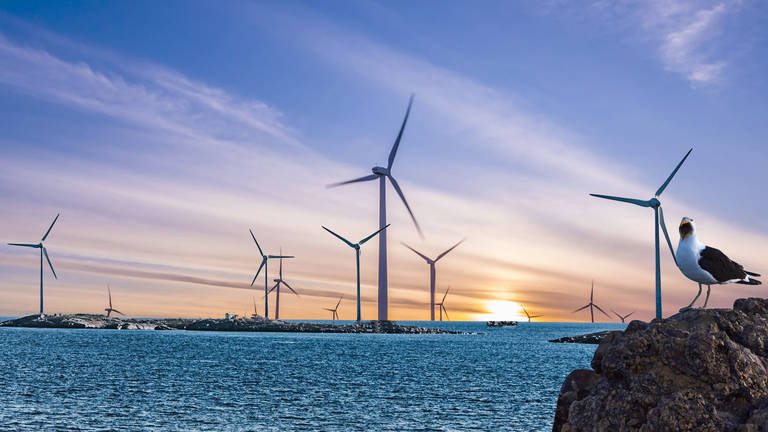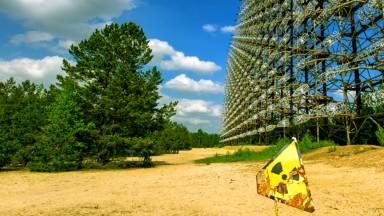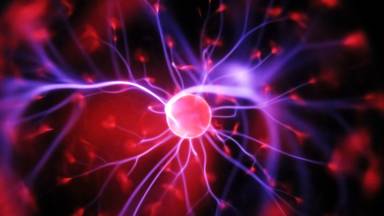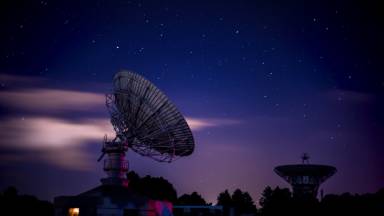
If 34 billion dollars in capital investment would provide for the energy needs of 6 million people, almost pollutant free, would you do it? That's the question Denmark population of 6 million is currently answering with a resounding Yes. Green energy, as we all know, is looking likely to be one of the keys to humanity's future. If it is successful, it will represent a societal change with implications for the whole planet. While recycling your bottles, and not leaving your TV on standby still has its place, it is becoming increasingly clear that bigger sweeping changes are needed to redress the climate crisis.
In fact, there have already been some mammoth projects in this area. South Korea uses an area of 16 square miles to produce energy from waves, having built an artificial wall to create tidal power generating Sihwa Lake. The UK powers around 600,000 homes with a single large wind farm, off its west coast, and Canada is set to open the world's biggest green hydrogen plant.
Denmark though, will be taking things one step further, producing an entire offshore island with the sole aim of making a ginormous step in the country's drive towards green energy. The island project the danish government favor will be 120,000 square meters in size, roughly the same as 20 football fields, and cost 34 billion to produce.
On three sides, the island will be protected by high sea walls, while the fourth side will offer docking space for boats needed to service the equipment it hosts.
They are literally "producing" an island. The artificial construction will be a large floating landmass located 50 miles off the danish coast, where it will be tethered in a spot surrounded by wind turbines. Focused entirely on green energy, it will initially produce enough electricity to power 3 million homes, slightly more than Denmark's current total of households 2.7 million. Still better, that 3 million figure is only for phase 1 of the production. In the long term the capacity to provide energy from the island is expected to grow to a level at which it can fuel more than nine million households.
That's an initial output of around three gigawatts of energy, increasing to close to 10 gigawatts over time. It is all part of a larger plan. Denmark's environmentally conscious government announced in early 2021, that they are to switch from being the EU's largest oil producer, to totally phasing out fossil fuels by 2050. They are already refusing further permits to search for oil in their north sea territories.
The energy island is intended as the next step on top of the 40 of danish energy already produced with wind. It will have multiple purposes. One is to provide a hub for 200 plus wind turbines that will flank the main site. Turbines are more efficient when located in the sea, as they can both be larger and make use of typically higher wind speeds. The turbines will be huge. Individually they could match the 184 meter height of Seattle's space needle. As well as the positive effects they will have on the environment, there will be some downsides such as the impact of their production, and they are eventually becoming obsolete. Some studies say that the structures provide refuge for fish and other sea creatures such as oysters and mussels, once in place. Though Of course, they can also kill birds.
The huge amounts of wind energy produced around the island will be used largely to fuel a large green hydrogen plant. With wind energy so abundant out in the sea, it becomes efficient to split water molecules to release hydrogen using electricity.
The process for producing hydrogen from water is one of electrolysis. Essentially, it involves passing current through the liquid, which causes the water to react at the positively charged anode, leaving behind oxygen gas, and positively charged hydrogen atoms. A permeable membrane between the two elements allows the hydrogen to pass back to the negatively charged cathode. The net effect is the production of hydrogen gas at one end of the reaction, and harmless oxygen at the other. Where the source of the electricity used to carry out the reaction is green, as in the case of the wind turbines here, the whole reaction is essentially free of greenhouse gases and other pollutants.
Of course, without the green energy production, you would still be swapping one form of energy for another. The environmental damage would already have been done in the production of the electricity used in the electrolysis. You would also lose some of that energy in inefficiencies in the reaction. This particular clever combination limits environmental damage, essentially, to the facilities required to build turbines, the island, and associated requirements. It does almost no damage through the energy production itself.
Once produced in such a clean manner, that hydrogen can be used in a number of different ways beyond just energy for houses. That includes producing ammonia fuel, that can be used to run ships in an environmentally efficient way, and producing green fuel for aircraft.
The airplane fuel option is particularly attractive from a green perspective, as while planes add a lot of carbon dioxide to the environment, the production of fuel through this method can also draw carbon dioxide from air as part of the production process, adding to the green benefits. Hydrogen produced on the island is also expected to be used in the longer term to fuel vehicles and industrial plants.
The offshore island could prove a big asset for Denmark, with long-term economic benefits, as well as environmental ones. Neighboring sweden has already found a way to use waste to create fuel. To such a degree that it now imports waste and exports fuel, making money on both ends.
Similarly, Denmark will be pumping its offshore island-produced fuel back to land as liquid in huge undersea pipes. And can then fuel its own homes industry and transport, but also export to the financial benefit of the country. Unlike its previous oil production, the fuel could also fetch a premium as a green form of energy. The netherlands and germany are said to be interested.
Denmark's green revolution is well underway already of course. The country already generates more than 50 percent of the EU's entire wind energy. There are strong laws around biodiversity, sustainable forestry, and sustainable fuels. Going forward, an annual energy report will track the road to carbon neutrality, which is a key policy target for 2050.
It is not even Denmark's only huge energy construction. At the same time as agreeing to construct this island, the country's politicians committed to a second project on a natural island called Bornholm, located in the baltic sea to the east of the country, similarly dedicated to green energy production. The aims are lofty. Only by inspiring others, and developing new green solutions that they also want to use is that we can really do something to combat climate change.









